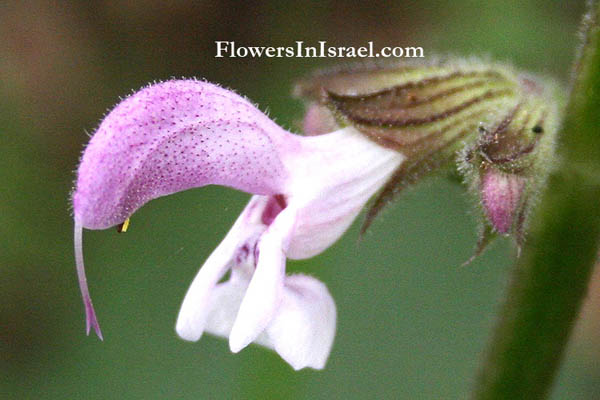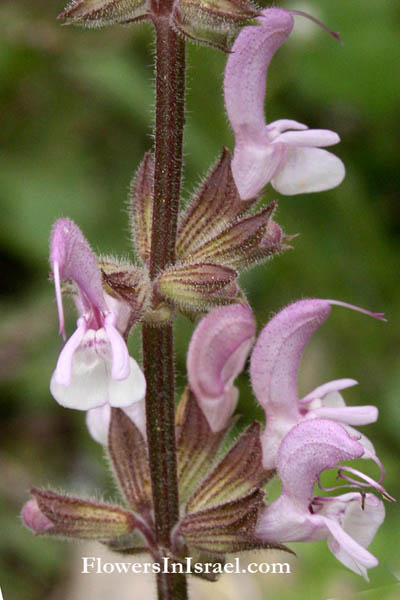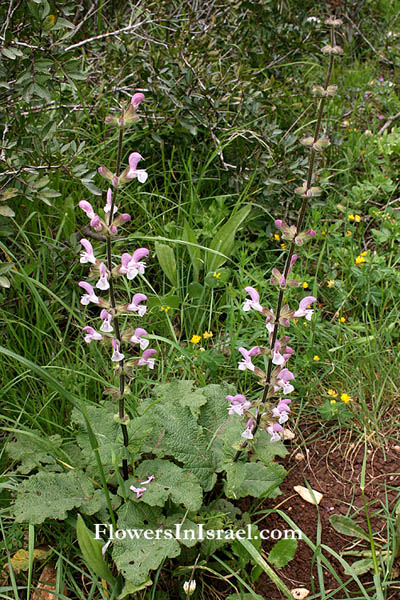Hebrew: מרוות ירושלים, Arabic: اذانه
| Scientific name: | Salvia hierosolymitana Boiss. | |
| Common name: | Jerusalem Sage, Red Sage | |
| Hebrew name: | מרוות ירושלים | |
| Arabic name: | اذانه | |
| Family: | Labiatae / Lamiaceae, שפתניים |

|
| Life form: | Hemicryptophyte | |
| Stems: | Up to 60 cm; flower stalks 30 cm above the foliage, square stem of the 30 cm long inflorescences are edged in red | |
| Leaves: | Opposite, rosette, entire, dentate or serrate | |
| Flowers: | Pink | |
| Fruits / Pods: | Nutlets | |
| Flowering Period: | March, April, May, June | |
| Habitat: | Mediterranean maquis and forest | |
| Distribution: | Mediterranean Woodlands and Shrublands, Semi-steppe shrublands, Montane vegetation of Mt. Hermon | |
| Chorotype: | Mediterranean | |
| Summer shedding: | Ephemeral |

Derivation of the botanical name: Salvia, Latin salvere, to save, referring to the long-believed healing properties of salvia. Pliny the Elder was the first known to use the Latin name salvia. hierosolymitana, hierosolyma, Jerusalem. The Israeli botanists Dr. Ephraim and Hanah Hareuveni pointed out that the architecture of the vertical inflorescence of this species of Salvia resembles the shape of the Menorah, in particular—the Salvia Palaestina. Therefore, they suggested that it had inspired the design of the Menorah. Moreover, based on etymology perspectives they suggested that the Hebrew word “Marva, מרווה” (Salvia) was originated from the Hebrew word “Moriah” (the Temple Mount name), reflecting the connection between this plant and the Menorah, which was situated inside the Holy Temple in Jerusalem.

|